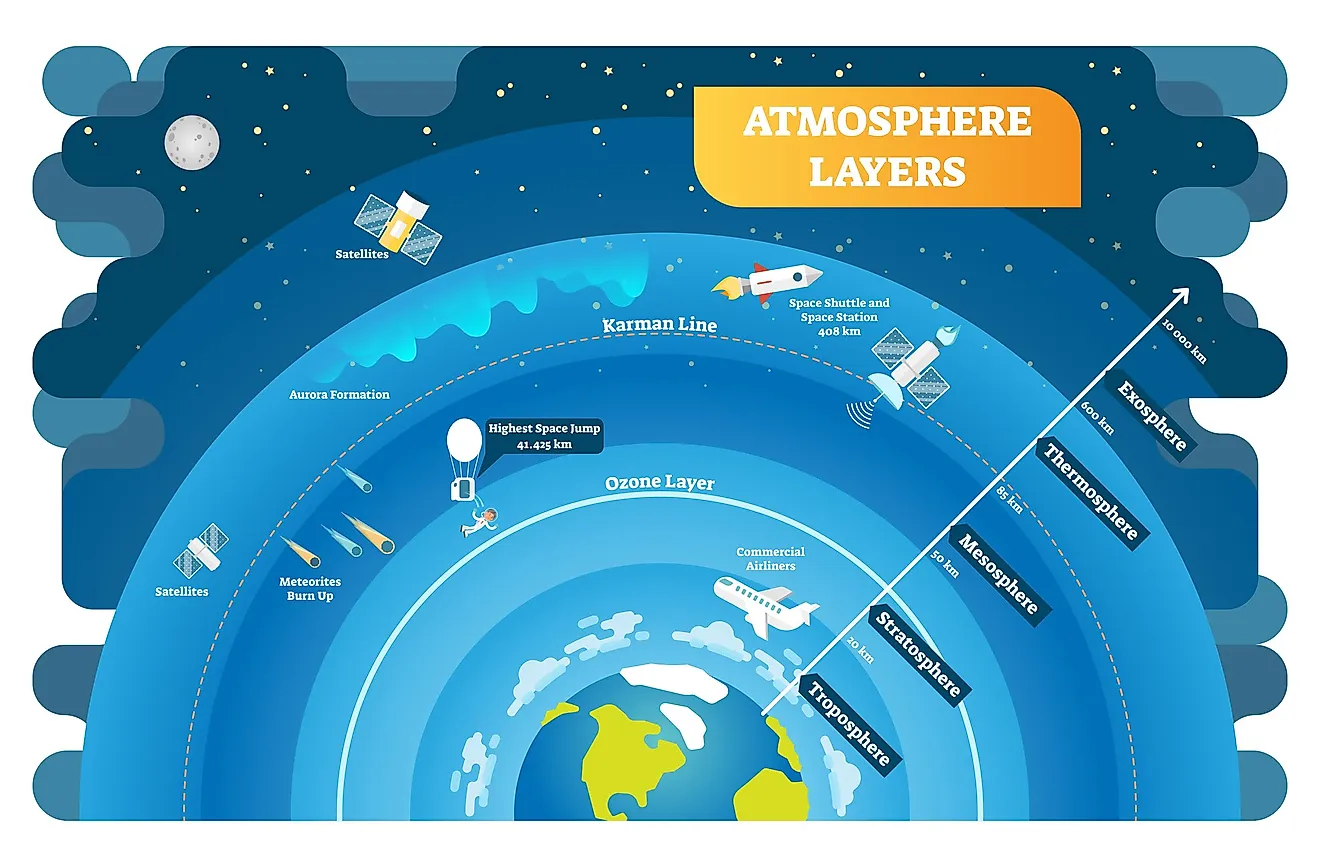What Is The Karman Line?

- Karman line is the boundary between the Earth's atmosphere and outer space.
- Its 100km (62 miles) above sea level
- Anything past the Karman line is not subject to control by countries like their airspace
The Karman line is an imaginary line that scientists use to define the border between outer space and the Earth’s atmosphere. The Karman line is at an altitude of approximately 62 miles. It is considered to be the starting point of outer space in various space treaties and also for aerospace record keeping.
The line got its name from Theodore Karman, a Hungarian-American scientist. The Karman line is recognized by the FAI (Federation-Aeronautique-Internationale). The FAI is a global record-keeping and standard-setting body for astronautics and aeronautics. Other international organizations like NASA and the US Air Force do not recognize this definition. NASA and the American Air Force define the limit at 50 miles.
Where is the Karman Line?
The atmosphere does not end abruptly at 62 miles above the sea level, but it does become thinner with altitude. Theoretically, if one were to consider the numerous layers of the Earth’s atmosphere, then the edge of space would be extended to 6,200 miles above the exosphere. However, the Karman line is determined by calculating at what elevation the Earth’s atmosphere becomes too weak to support flight. At the Karman line, the atmosphere is too thin to support flight, and the the plane must go fast to stay aloft. The Karman line is situated above the Homopause, and above this point, the atmospheric gasses are not well-mixed.
Theodore Karman
Theodore Karman was the first human to determine at which height the Earth’s atmosphere is too thin to support flight. He was a Hungarian-American physicist and engineer who was born in May 11, 1881. According to his calculation, the atmosphere is too thin to support flight at 51.9 miles above mean sea level. Theodore determined that at this altitude, the aircraft must be faster than the orbital velocity to derive sufficient lift to support itself.
Alternatives to the Karman Line
The American Air Force defines an astronaut as an individual who has flown over 50 miles above the mean sea level (between the thermosphere and the mesosphere). NASA used FAI’s figure (62 miles) until 2005 when they changed to 50 miles to get rid of inconsistency between civilians and military personnel flying the same spacecraft. Recent work by Gangale Thomas and Jonathan McDowell advocate for the Karman line to be shifted from 62 miles to 50 miles, citing Theodore Karman’s calculations and notes as evidence. Their findings forced the FAI to propose a meeting with the IAF to explore this issue in 2019.











